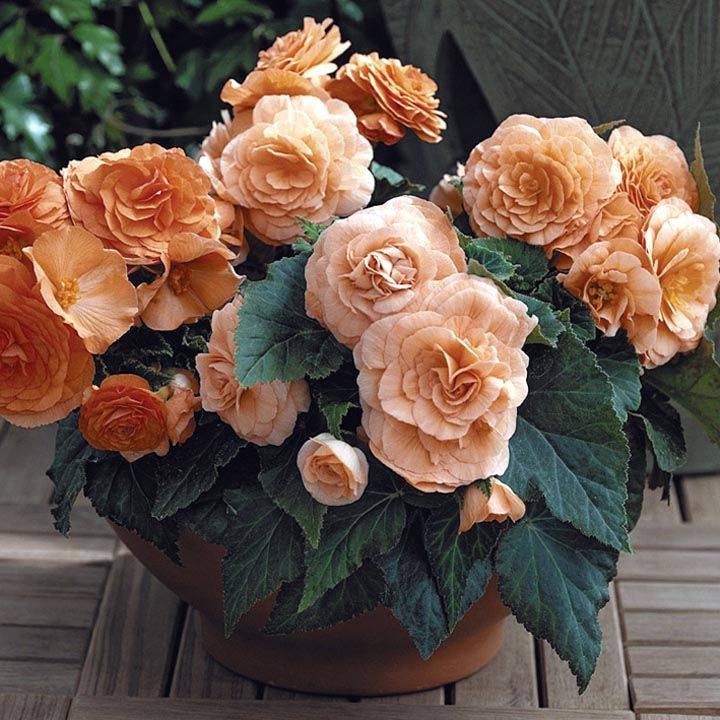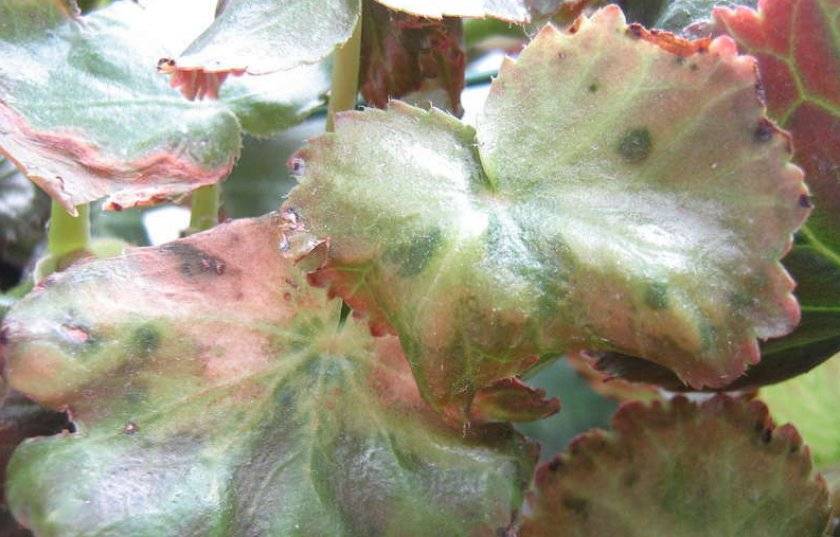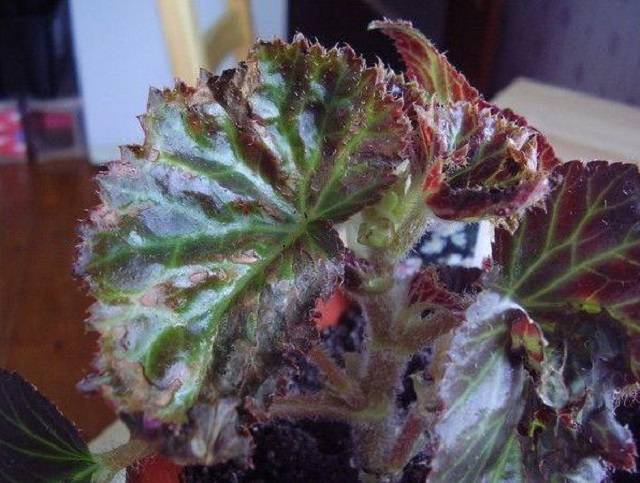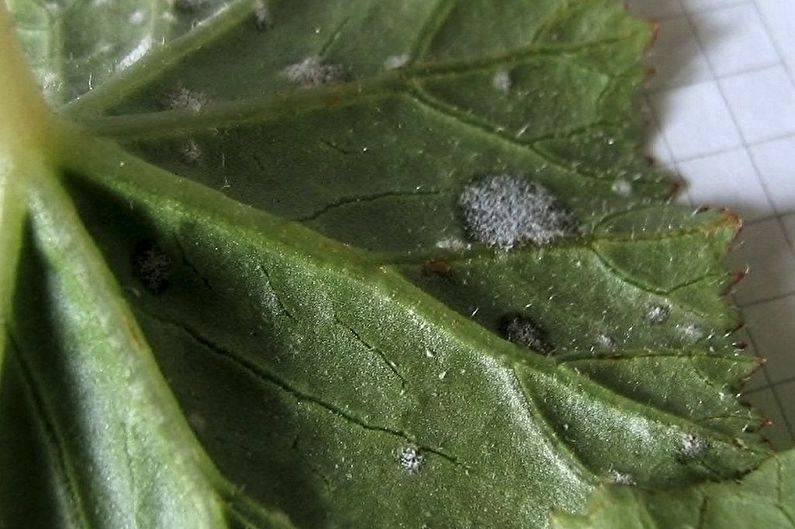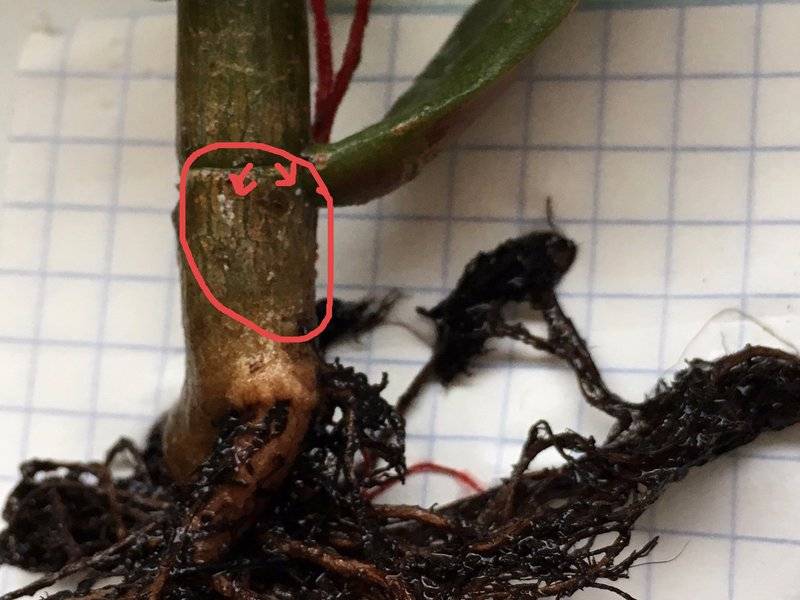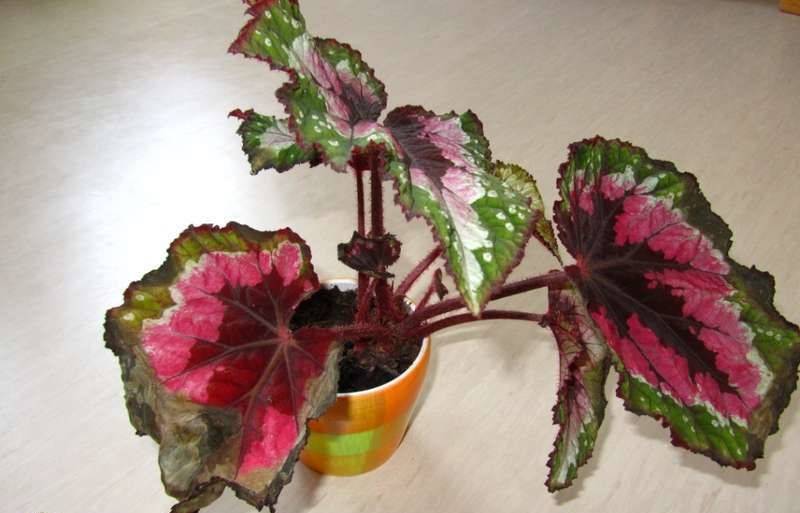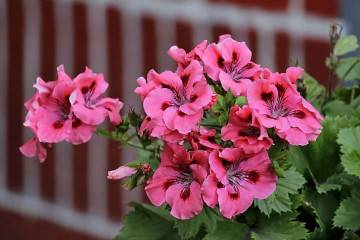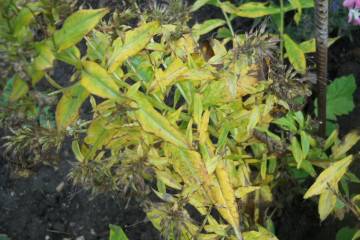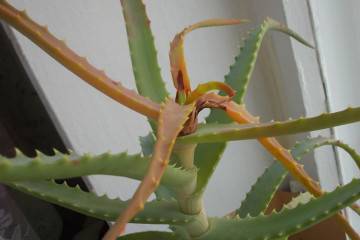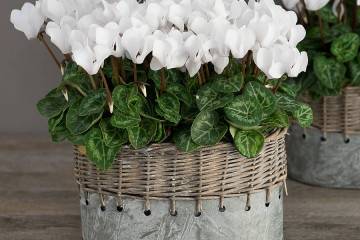Begonia leaves dry - what to do
Content:
Begonia is a beautiful flower that has become a favorite for growing at home. Before planting a plant, many growers do not think about finding out the conditions of care, because of which it may die. If begonia leaves begin to turn yellow and dry, it is necessary to urgently find out the reasons for this phenomenon.
Begonia leaves dry: what could be the reasons
A common problem for novice gardeners and florists is that begonia leaves dry at the edges, few of them know what to do in such a situation. But, before looking for a way to solve the problem, you need to find out why the flowers and leaves are drying up.
Diseases
The main reason why begonia leaves can dry out is the presence of diseases. They can be transmitted from other plants, through the soil, if it was made by yourself, due to the lack of disinfection. Improper care can also contribute to this.
Bacterial spot
If black spots appear on the flower leaves, but provided that the plant itself is blooming, then, most likely, bacterial wilting has manifested itself. It develops gradually: blistering spots over time begin to grow, form large areas and turn black. You can cope with the problem by spraying with fungicidal solutions. This can be done for prevention.
Powdery mildew
Powdery mildew appears as white powdery spots on the leaves and stems of the flower. You can stop development with fungicides. It is also worth moving the plant to a cool, well-ventilated area. These conditions will prevent the disease from spreading further.
Cucumber Mosaic Virus
The disease manifests itself as yellow spots and rings on the leaves of the plant. Subsequently, the foliage begins to deform. If this happens, the only thing worth doing is to destroy the plant as the source of the cucumber mosaic virus. There are no means to combat this disease, but it can quickly spread to neighboring flowers, and therefore it is worth preventing this in the first place.
Gray rot
Gray rot appears on the leaves and stems of the plant, covering them with a greenish bloom. Gradually, the infection can move to the flowers of begonia, they will begin to wither, which is why a quick response is required. It is recommended to process the plant with benomyl. It is also necessary to transfer the flower to a dry, cool room.
Black root rot
Diseases associated with the tuberous part of the flower are not so easy to identify. If the question arises why the tips of the leaves of begonia began to dry, its growth stopped, you can try to transplant it. Black root rot will appear in the process - the roots will be black and rotten.
Diseases appear due to excessive watering, and you can cope with it with benomyl.
Pests
Parasites appear due to improper care or from other flowers.To prevent their occurrence, it is required to disinfect tools and pots during planting, and also to use special solutions.
Greenhouse aphid
The usual food for greenhouse aphids is the juice of begonia leaves. The massive spread of this pest can contribute to the death of the plant. She can even get into the apartment through the window, since she can fly. It testifies to its appearance as follows - the leaves curl into a tube, turn yellow and fall off along with the buds.
Soft shield
The most dangerous pest is considered a soft false shield. It settles inside the shoots, stopping their development, which subsequently leads to the drying of the flower. It is difficult to get rid of it; infected shoots must be manually cleaned with a soft brush.
Greenhouse whitefly
If the plant is a garden, then during prolonged rains, a greenhouse whitefly may appear. She loves moisture, settles mainly on the leaves, feeds on the sap of the plant. It is not difficult to notice its appearance: the leaves of the flower gradually become colorless and begin to dry out.
It will help to overcome her soap solution. It is diluted as follows: 40 g of liquid laundry soap is taken for 10 liters of water (the bar can be grated on a soft grater and dissolved in warm water). Then it is worth spraying the plant, but in such a way that the substance does not get on the roots.
Spider mite
It is not for nothing that the spider mite has such a name. You can find it by the cobweb on the plant. Affected leaves become spotty, soon turn yellow and fall off. A pest can be expected due to frequent watering, elevated indoor temperatures and high humidity. The fight can be carried out by spraying the begonia with decis.
Leaf and root nematodes
Gall nematode appears as outgrowths and swellings on the leaves, roots and stems of the plant. It is a small worm that can stop the growth of a plant, cause it to rot. It is more difficult to eliminate a pest than to prevent its appearance. This requires pouring boiling water or hot steam over the soil before planting in order to destroy the larvae.
If the pests do appear, it is recommended to cut off the affected areas from the begonia and start processing heterophos. The substance must be poured under the roots of the plant. In this case, about 100 ml should go to 1 pot.
The leaf nematode only affects the leaves, hence the name. The presence of a pest can be detected by light green spots on the leaves, which will begin to darken over time. It is possible to deal with a nematode of this type only at the initial stages of its infection (heterophos needs to be sprayed on the upper part of the flower), but it is better to get rid of the plant and disinfect the container for the next plantings.
Soil moisture
Begonia is a rather finicky flower. She cannot help herself, and therefore signals that not everything is in order with the help of her leaves - they begin to dry and curl. Overdrying or waterlogging of the soil may be one of the reasons. The plant loves moisture, but it requires uniform watering and a fairly high humidity. It is recommended to water the plant in a tray.
Air temperature
It is important that the air temperature in the room is moderate. Optimal conditions for begonias are between 15 ° C and 25 ° C. The plant will be uncomfortable in a draft.
The location of the flower pot must be carefully selected. The best option would be southwest and southeast windows. However, if the radiators are located under the windowsill or the windows are often open, it is better to place the pot away from these sources. Also, do not allow direct sunlight to hit the leaves, as they can leave burns.
Decay of roots
Root decay can be facilitated by excessive watering, combined with cold indoor air, or nematode damage. In the second case, you need to start treatment immediately. In the first, if the problem was noticed in time, you can transplant the plant into another pot, while cutting off the affected roots.
Other possible problems
When an indoor flower begins to dry out, this may mean that it is simply not getting enough nutrients. He takes trace elements from the soil. If begonia is in the same substrate for a long time, then it, for sure, has been depleted during this time. Fertilizers are indispensable, especially during the flowering period. Begonia requires feeding several times a month.
In addition to those listed, there are many reasons why begonia withers. The main one is improper care. This happens out of ignorance, and therefore you should figure out how to properly care for the plant so as not to let it dry out. First of all, it is worthwhile to understand that you cannot spray the flowers, since they begin to wither from this and after a while fall off.
It is necessary to ensure that no water droplets fall on the buds, but do not forget that too dry air also negatively affects the condition of the flower. In the dry air, the flowers will begin to dry out and fall off.
The answer to the question of what to do if begonia withers and dries up, is the need to revise its care. If you treat pests and diseases on time, apply fertilizers, prevent excessive soil moisture and dry air, begonia will bloom and delight the gardener's eye for a very long time.
